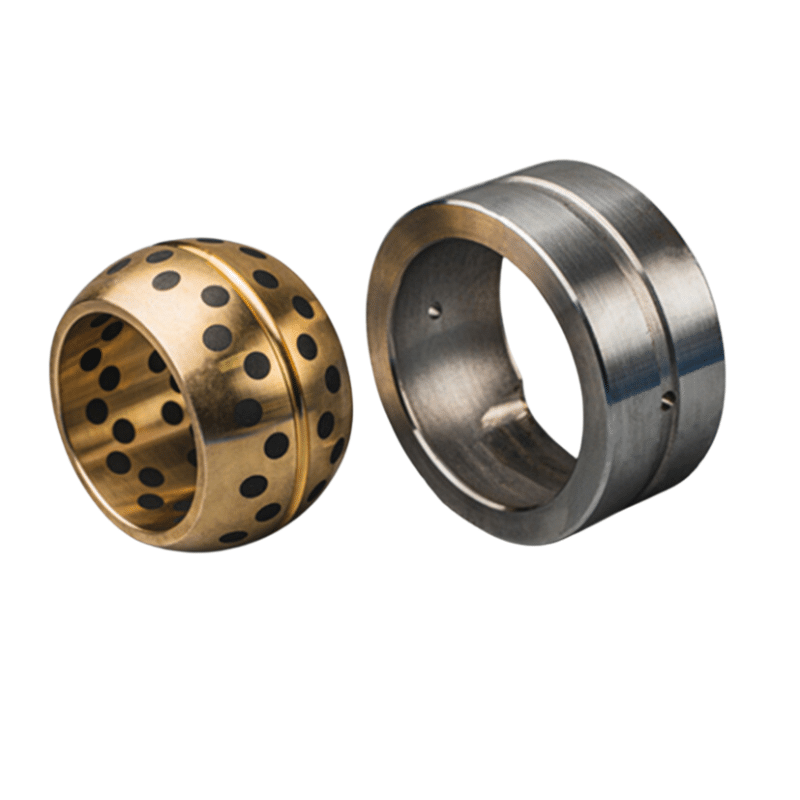Understanding the Materials Used in Cone Crusher Bushings: Spotlight on Self-Lubricating Bronze Alloys
Cone crushers are essential equipment in the mining and aggregates industry, crucial for reducing large rocks into smaller, manageable sizes. A key component that ensures the smooth operation and longevity of cone crushers is the bushing. Specifically, the self-lubricating copper sleeve of cone crusher bushings stands out due to its robustness and innovative material composition. This article delves into the properties and types of bronze alloys used in these bushings, highlighting their crucial role in crusher efficiency and durability.
What is a Self-Lubricating Copper Sleeve?
The self-lubricating copper sleeve in cone crusher bushings is crafted from a specialized copper alloy, enhanced with additional elements to boost its wear resistance and self-lubricating capabilities. This material choice is deliberate to ensure that the cone crusher operates efficiently under high-load and high-pressure conditions, maintaining stability and performance.
Key Characteristics of Self-Lubricating Bronze Materials
- High Wear Resistance: Given the extreme impact forces and friction encountered during crusher operations, these copper sleeves are designed to exhibit exceptional wear resistance, reducing downtime and maintenance needs.
- Excellent Self-Lubrication: These bushings can lubricate themselves without external fluids, thanks to the intrinsic properties of the material which allow elemental migration within the sleeve. This reduces friction and further wear, enhancing the crusher’s operational life.
- Corrosion Resistance: Crushers often come into contact with corrosive substances, making corrosion resistance a vital trait of bushing materials to prevent premature degradation.
- Thermal Stability: The ability to maintain performance without deformation under high temperatures is crucial, especially in harsh working environments.
- Strong Mechanical Properties: These include high strength, robust toughness, and significant impact absorption capability, all of which are critical under the strenuous conditions of a crusher.
Composition and Varieties of Bronze Alloys
The bronze alloys used for these bushings typically include elements like copper, lead, tin, antimony, and zinc, each adding unique properties that enhance the bushing’s overall performance. Here are some common bronze alloy materials used:
- CuSn8 (Tin Bronze): Contains about 8% tin, known for good wear resistance and self-lubricating properties.
- CuSn10 (Tin Bronze): Has around 10% tin, offering improved wear resistance compared to CuSn8.
- CuPb30 (Lead Bronze): Comprises about 30% lead, notable for its superior self-lubrication and good wear resistance.
- CuZn33Pb3 (Aluminum Bronze): Contains approximately 33% zinc and 3% lead, praised for its strength and wear resistance.
- CuAl10Fe3 (Aluminum Iron Bronze): Includes about 10% aluminum and 3% iron, valued for its strength and corrosion resistance.
These material codes are often aligned with international or national standards like China’s GB/T, America’s ASTM, or Germany’s DIN standards. Manufacturers select the appropriate bronze alloy based on the specific requirements and operating conditions of the cone crusher to optimize performance and durability.
Conclusion
The selection and design of the self-lubricating copper sleeves in cone crusher bushings are critical to the effective and stable operation of cone crushers. These materials not only withstand severe conditions but also contribute to the efficiency and longevity of the equipment. As such, understanding the properties and standards of these materials is essential for anyone involved in the design, operation, or maintenance of cone crushers.











